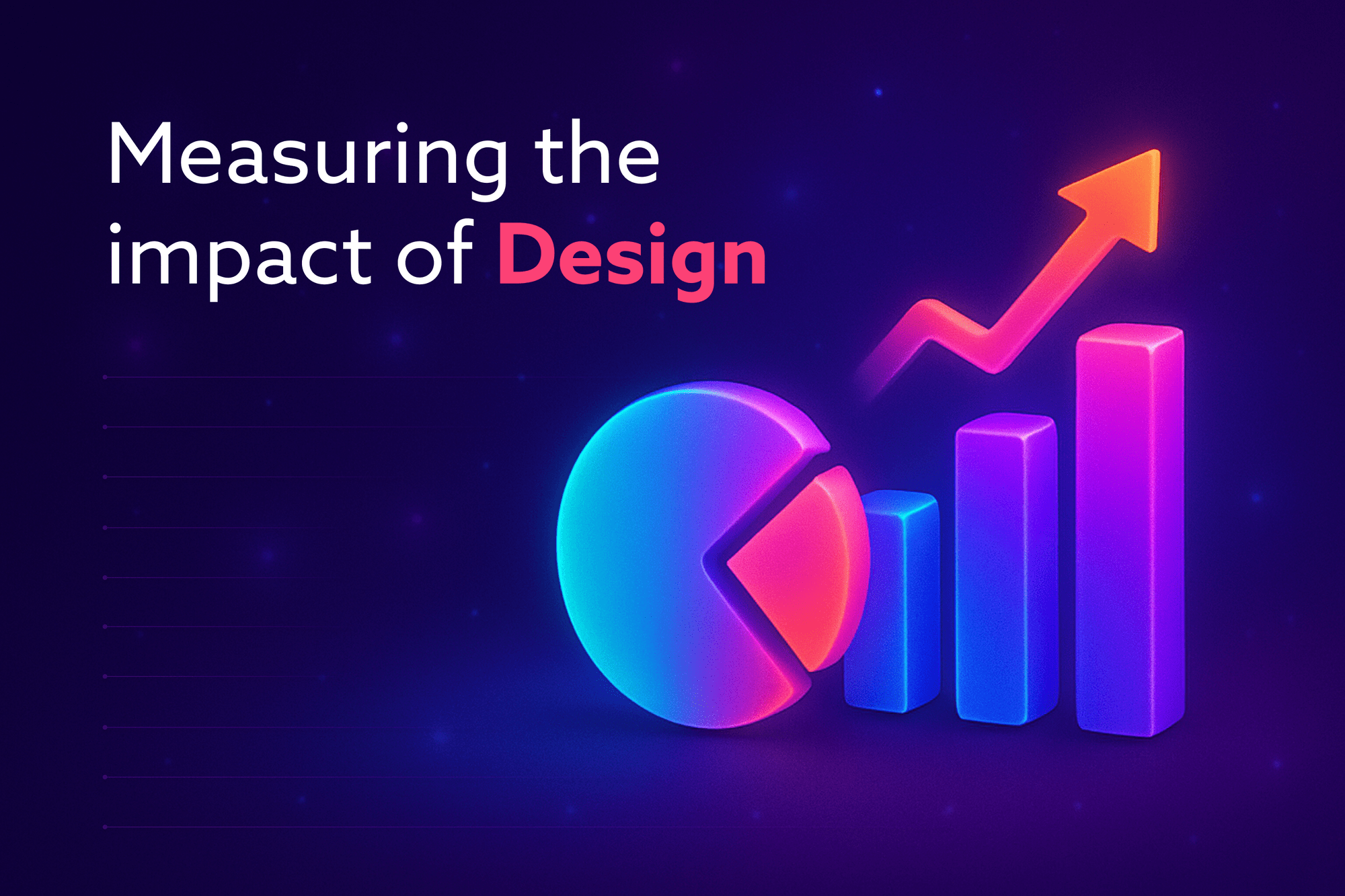
Design isn’t just about how something looks. It’s about how well it works.
And more importantly: how well it works for the people using it and for the business behind it.
At Codelitt, I often work with teams looking to level up their design practice. One of the biggest mindset shifts I help them make is this: design success isn’t subjective. It’s measurable.
Why Metrics Matter
I’ve sat in countless design reviews where feedback sounds like: “It feels clean” or “I like this direction.”
While those opinions are valid, they’re rooted in personal taste, not measurable impact.
Good design solves problems. Great design drives behavior. And behavior can be measured.
You can track anything, literally anything. I could track my steps every day, but if it’s not tied to a goal (like hitting 10,000 steps daily or improving fitness), it’s just hoarding data. It drains resources and ultimately serves no purpose. UX metrics work the same way: measure what matters, not what’s convenient.
Metrics help answer critical questions: Are users completing key tasks? Are they returning to the product? Is design helping the business meet its goals? Without measurement, design decisions are guesswork.
What to Measure
There’s no one-size-fits-all KPI. The right metrics depend on your business goals, your users’ journey, and where you’re investing in UX.
Some common signals we track include:
Conversion Rates
- Are users taking the actions your business needs: signing up, upgrading, or completing workflows?
- Case Study: Users were dropping off before signing up for one of our client’s apps. We redesigned the landing pages and sign-up flows to be more conversational and geared toward the user’s interest. As a result, user sign-ups increased by 50%.
Activation + Retention
- Are new users finding value quickly? Are they coming back regularly? Onboarding, empty states, clarity of features, and early wins all impact retention.
- Case Study: A comprehensive map-based CRE tool we worked on had poor usability, overloaded features, and high barriers to entry. After researching user needs, we removed unnecessary features, streamlined the application, and upon release, we saw a 30% increase in users, 40% increase in sessions, and a 10% decrease in bounce rates.
Engagement Metrics
- Are users interacting with the features you’ve built the way you intended? Low engagement can signal unclear design or misaligned expectations.
- Case Study: A compliance company’s website had confusing and difficult-to-understand categories, which hurt discoverability. After consulting with users, we reorganized the categories and updated the wording. Engagement doubled in just six weeks.
Drop-Off Points
- Where are users getting stuck or leaving entirely? Pain points highlight friction and missed opportunities to smooth the journey.
- Case Study: A business was spending significant manual hours creating map-based marketing materials for brokers. We built a custom map-based application that streamlined the process, reducing wasted manpower equivalent to 3 full time employees (over 6000 hours a year!). This didn’t just make the team 90% more effective, it also directly removed a major friction point in their workflow.
As UX expert Jared Spool emphasizes, the best UX metrics aren’t just numbers, they’re tied directly to business outcomes. If a metric doesn’t connect to a tangible goal, it’s probably not worth tracking.
Making UX Impactful
Metrics aren’t just for dashboards, they’re for action. When properly connected to business goals, design becomes a strategic lever, not just a creative exercise.
- Want revenue growth? Optimize upgrade flows, subscription experiences, and feature discoverability.
- Struggling with churn? Simplify onboarding, highlight key value early, and remove friction points.
- Low adoption? Improve usability, clarify messaging, and help users see the product’s value faster.
Design isn’t here just to make things look better, it’s here to make products perform better, for both users and the business.Tracking the right KPIs moves you away from opinions and toward outcomes. If your team isn’t measuring design yet, don’t worry, the data is already there. You just need to know where to look and which signals matter most.



